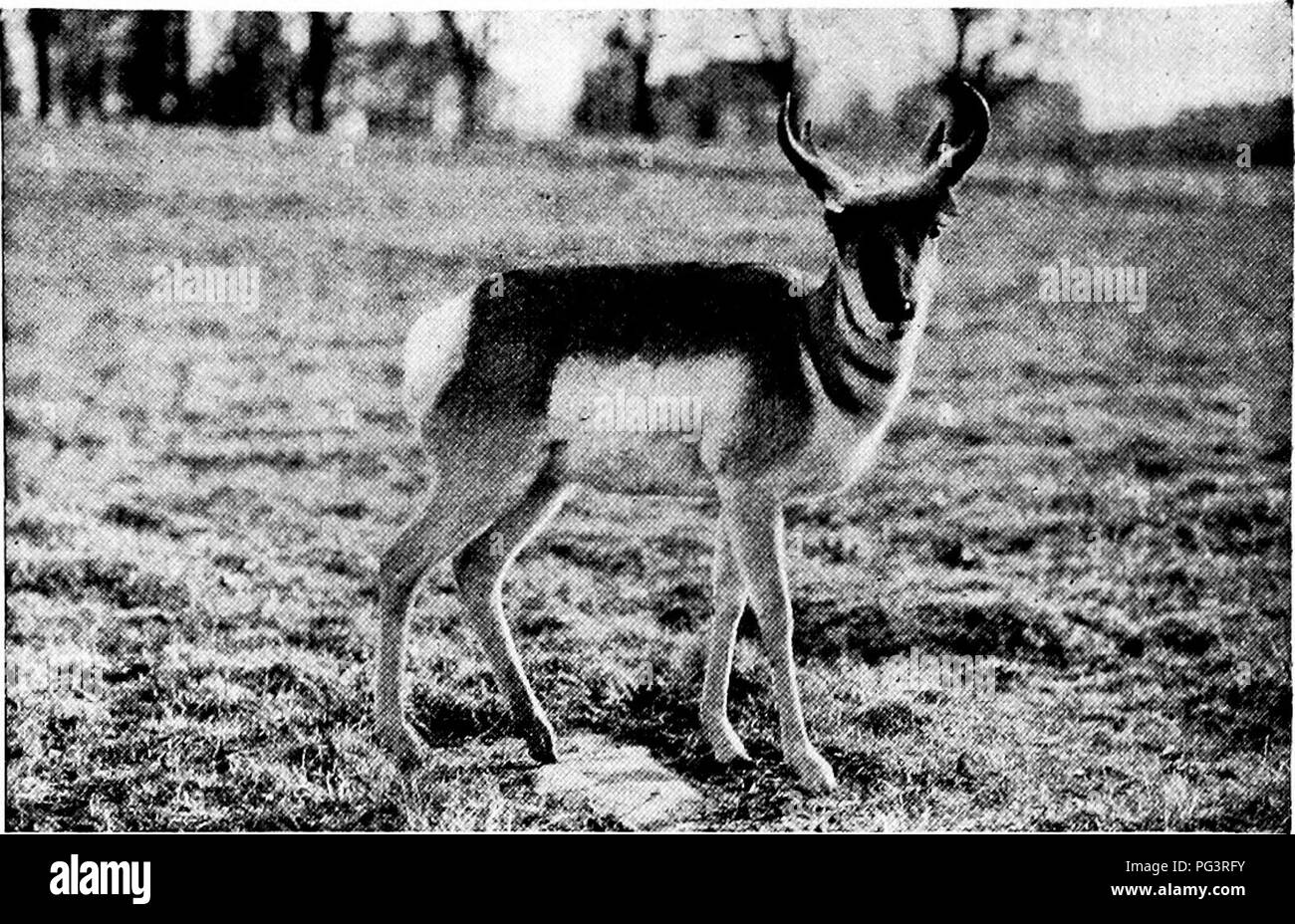. Popular official guide to the New York Zoological Park. New York Zoological Park. 52 POPULAR OFFICIAL GUIDE.. AMERICAN PRONG HORNED ANTELOPE. species to become extinct, and if we may judge by the rate at which the bands have been disappearing during the last fifteen years, ten years more will, in all probability, wit- ness the extermination of the last individuals now struggling to exist outside of rigidly protected areas. It was the inten- tion of the Society to make liberal provision for the study of the species while it is yet possible to obtain living specimens, for fifty years hence- ou

Image details
Contributor:
Central Historic Books / Alamy Stock PhotoImage ID:
PG3RFYFile size:
7.2 MB (623.4 KB Compressed download)Releases:
Model - no | Property - noDo I need a release?Dimensions:
1969 x 1270 px | 33.3 x 21.5 cm | 13.1 x 8.5 inches | 150dpiMore information:
This image is a public domain image, which means either that copyright has expired in the image or the copyright holder has waived their copyright. Alamy charges you a fee for access to the high resolution copy of the image.
This image could have imperfections as it’s either historical or reportage.
. Popular official guide to the New York Zoological Park. New York Zoological Park. 52 POPULAR OFFICIAL GUIDE.. AMERICAN PRONG HORNED ANTELOPE. species to become extinct, and if we may judge by the rate at which the bands have been disappearing during the last fifteen years, ten years more will, in all probability, wit- ness the extermination of the last individuals now struggling to exist outside of rigidly protected areas. It was the inten- tion of the Society to make liberal provision for the study of the species while it is yet possible to obtain living specimens, for fifty years hence- our graceful and zoologically interest- ing Prong-Horn will be as extinct as the dodo. Unfortu- nately, however, it fares so badly on the Atlantic coast, there will, no doubt, be periods wherein this species will be temporarily absent from the Park. Forty years ago this animal inhabited practically the whole of the great pasture region which stretches eastward from the Rocky Mountains to the western borders of Iowa and Missouri. Northward its range extended far into Mani- toba ; southward it went far beyond the Rio Grande, and it also ranged southwestward through Colorado and Nevada to southern California. Its chosen home was the treeless plains, where the rich buffalo grass and bunch grass afforded abundant food, but it also frequented the beau- tiful mountain parks of Wyoming and Colorado. It even lived contentedly in the deserts of the southwest, where its voluntary presence, coupled with the absence of water, con- stituted a problem which has puzzled the brain of many a desert traveller.. Please note that these images are extracted from scanned page images that may have been digitally enhanced for readability - coloration and appearance of these illustrations may not perfectly resemble the original work.. New York Zoological Park; Hornaday, William Temple, 1854-1937; New York Zoological Society. New York, New York Zoological Society